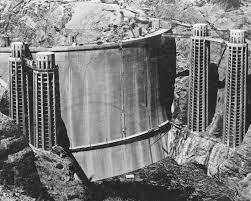Che Guevara is executed
On October 9, 1967, socialist revolutionary and guerilla leader Che Guevara, age 39, is killed by the Bolivian army. The U.S.-military-backed Bolivian forces captured Guevara on October 8 while battling his band of guerillas in Bolivia and executed him the following day. His hands were cut off as proof of death and his body was buried in an unmarked grave. In 1997, Guevara’s remains were found and sent back to Cuba, where they were reburied in a ceremony attended by President Fidel Castro and thousands of Cubans.
Ernesto Rafael Guevara de la Serna was born to a well-off family in Argentina in 1928. While studying medicine at the University of Buenos Aires, he took time off to travel around South America on a motorcycle; during this time, he witnessed the poverty and oppression of the lower classes. He received a medical degree in 1953 and continued his travels around Latin America, becoming involved with left-wing organizations. In the mid 1950s, Guevara met up with Fidel Castro and his group of exiled revolutionaries in Mexico. Guevara played a key role in Castro’s seizure of power from Cuban dictator Fulgencio Batista in 1959 and later served as Castro’s right-hand man and minister of industry. Guevara strongly opposed U.S. domination in Latin America and advocated peasant-based revolutions to combat social injustice in Third World countries.
Guevara resigned—some say he was dismissed—from his Cuban government post in April 1965, possibly over differences with Castro about the nation’s economic and foreign policies. Guevara then disappeared from Cuba, traveled to Africa and eventually resurfaced in Bolivia, where he was killed. Following his death, Guevara achieved hero status among people around the world as a symbol of anti-imperialism and revolution. A 1960 photo taken by Alberto Korda of Guevara in a beret became iconic and has since appeared on countless posters and T-shirts. However, not everyone considers Guevara a hero: He is accused, among other things, of ordering the deaths of hundreds of people in Cuban prisons during the revolution.
WORLD WAR II
1940
St. Paul’s Cathedral bombed
During the Battle of Britain, the German Luftwaffe launches a heavy nighttime air raid on London. The dome of St. Paul’s Cathedral was pierced by a Nazi bomb, leaving the high altar in ruin. It was one of the few occasions that the 17th-century cathedral suffered significant damage during Germany’s nearly ceaseless bombing raids on London in the fall of 1940.
GERMANY
1974
Oskar Schindler—credited with saving 1,200 Jews during the Holocaust—dies
German businessman Oskar Schindler, credited with saving 1,200 Jews from the Holocaust, dies at the age of 66. A member of the Nazi Party, he ran an enamel-works factory in Krakow during the German occupation of Poland, employing workers from the nearby Jewish ghetto.
RUSSIA
1975
Andrei Sakharov wins Nobel Peace Prize
Andrei Dmitriyevich Sakharov, the Soviet physicist who helped build the USSR’s first hydrogen bomb, is awarded the Nobel Prize for Peace in recognition of his struggle against “the abuse of power and violations of human dignity in all its forms.
COLONIAL AMERICA
1635
Rhode Island founder banished from Massachusetts
Religious dissident Roger Williams is banished from the Massachusetts Bay Colony by the General Court of Massachusetts. Williams had spoken out against the right of civil authorities to punish religious dissension and to confiscate Native American land.
INVENTIONS & SCIENCE
1992
Meteorite crashes into Chevy Malibu
On October 9, 1992, 18-year-old Michelle Knapp is watching television in her parents’ living room in Peekskill, New York when she hears a thunderous crash in the driveway. Alarmed, Knapp ran outside to investigate.
INVENTIONS & SCIENCE
1936
Hoover Dam begins transmitting electricity to Los Angeles
On October 9, 1936, harnessing the power of the mighty Colorado River, Hoover Dam begins sending electricity over transmission lines spanning 266 miles of mountains and deserts to run the lights, radios, and stoves of Los Angeles.
ART, LITERATURE, AND FILM HISTORY
1946
"The Iceman Cometh," by Eugene O’Neill, opens on Broadway
Hailed by many critics as Eugene O’Neill’s finest work, The Iceman Cometh opens at the Martin Beck Theater on October 9, 1946. The play, about desperate tavern bums clinging to illusion as a remedy for despair, was the last O’Neill play to be produced on Broadway before the author’s death in 1953.
NATURAL DISASTERS & ENVIRONMENT
1963
Landslide kills thousands in Italy
On October 9, 1963, a landslide in Italy leads to the deaths of more than 2,000 people when it causes a sudden and massive wave of water to overwhelm a dam. The Diga del Vajont dam was built in the Vaiont Gorge to supply hydroelectric power to Northern Italy.
CRIME
1942
A Chicago bootlegger escapes from prison
Chicago bootlegger Roger “The Terrible” Touhy escapes from Illinois’ Stateville Prison by climbing the guard’s tower. Touhy, who had been framed for kidnapping by his bootlegging rivals with the help of corrupt Chicago officials, was serving a 99-year sentence for a kidnapping he did not commit. He was recaptured a couple of months later.










Comments
Post a Comment